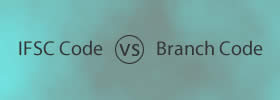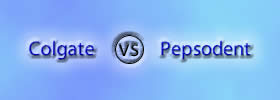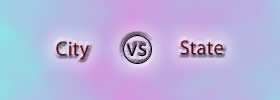Difference between a Positive Ion and a Negative Ion
Key difference: A positive ion and a negative ion are a part of an atom or a molecule. The key difference between the two ions is their net electrical charge of the ion, wherein a positive ion has a net negative charge and a negative ion has a net positive charge.
In chemistry, atom is considered to be the smallest particle of a matter. And, matter is what the entire universe made off. So, all matter, living or non-living organisms are made up of atoms. An atom consists of a small nucleus, which is made up of protons, neutrons and electrons. Only, the protons and the neutrons are present inside the atom, whereas the electrons revolve around the nucleus in a dedicated circular path.
.jpg) Now, depending on the number of protons and electrons in the nucleus, the charge of the atom is determined. Often, the charge of the atom is neutral in nature, because it is consist of equal number of protons and electrons. These neutrons, electrons, and protons are further classified into ions.
Now, depending on the number of protons and electrons in the nucleus, the charge of the atom is determined. Often, the charge of the atom is neutral in nature, because it is consist of equal number of protons and electrons. These neutrons, electrons, and protons are further classified into ions.
Ions are defined as a molecule or an atom, wherein the total number of electrons is not equal to the total number of protons, thus, giving the atom a net positive or negative electrical charge. Now, if the ion is formed by a loss of electrons, a positive charge is developed, and if it is formed by the gain of electrons, then a negative charge is imparted to the particle. This whole process is termed as ionization.
In ionization, the ion with a net positive charge on it is termed as ‘positive ion’ or ‘cation’. Cation is an ion which has a greater number of protons than electrons. It is formed when the neutral ion loses its one electron from the valance shell, and the number of protons in the nuclei becomes higher than the number of electrons in the outer-shell. And, because of the less number of electrons, a positive charge is attained by the ion.
.jpg) On the other hand, the ion with the net negative charge is termed as ‘negative ion’ or ‘anion’. An anion is just the opposite of a cation. They are just negatively charged ions formed by neutral atoms. The neutral atom gains an electron in its valance shell, and the number of electron increases in the atom. The ion uses the electron to stabilize itself, and instantly pulls in more electrons from the shell. Thus, the number of the electrons increases and the number of the protons decreases in atom.
On the other hand, the ion with the net negative charge is termed as ‘negative ion’ or ‘anion’. An anion is just the opposite of a cation. They are just negatively charged ions formed by neutral atoms. The neutral atom gains an electron in its valance shell, and the number of electron increases in the atom. The ion uses the electron to stabilize itself, and instantly pulls in more electrons from the shell. Thus, the number of the electrons increases and the number of the protons decreases in atom.
Both, anions and cations can be further divided depending upon the multiple charges. And, all the above terms are used for single charges. The positive ions and negative ions are differentiated in the table below.
Comparison between a Positive Ion and a Negative Ion:
|
|
Positive Ion |
Negative Ion |
|
Definition |
An atom or a molecule which is negatively charged i.e. has more number of electrons than protons. |
An atom or a molecule which is positively charged i.e. has more number of protons than electrons. |
|
Net Charge |
It is a negative net charge ion. |
It is a positive net charge ion. |
|
Ionization |
This process is exothermic in nature. |
This process is endothermic in nature. |
|
Electrode |
During electrolysis, it is attracted to the anode. |
During electrolysis, it is attracted to the cathode. |
|
Formed by |
They are formed by attracting electrons. |
They are formed by losing electrons. |
|
Also referred as |
Anion |
Cation |
|
Element type |
Non-metal |
Metal |
|
Examples |
Sulfide, fluoride, chloride, bromide, iodide, nitride and hydride. |
Sodium, iron, and lead. |
Image Courtesy: gcps.desire2learn.com, marin.edu









Comments
Aisha Mohammed ...
Mon, 01/29/2018 - 19:24
I am pretty sure that positive ions are the ones that have more protons than electrons and are called cations...
A
Mon, 05/25/2015 - 06:58
Christina
Sat, 10/03/2015 - 17:00
THIS IS EXCELLENT
JAVED IQBAL
Sun, 05/11/2014 - 16:57
Add new comment